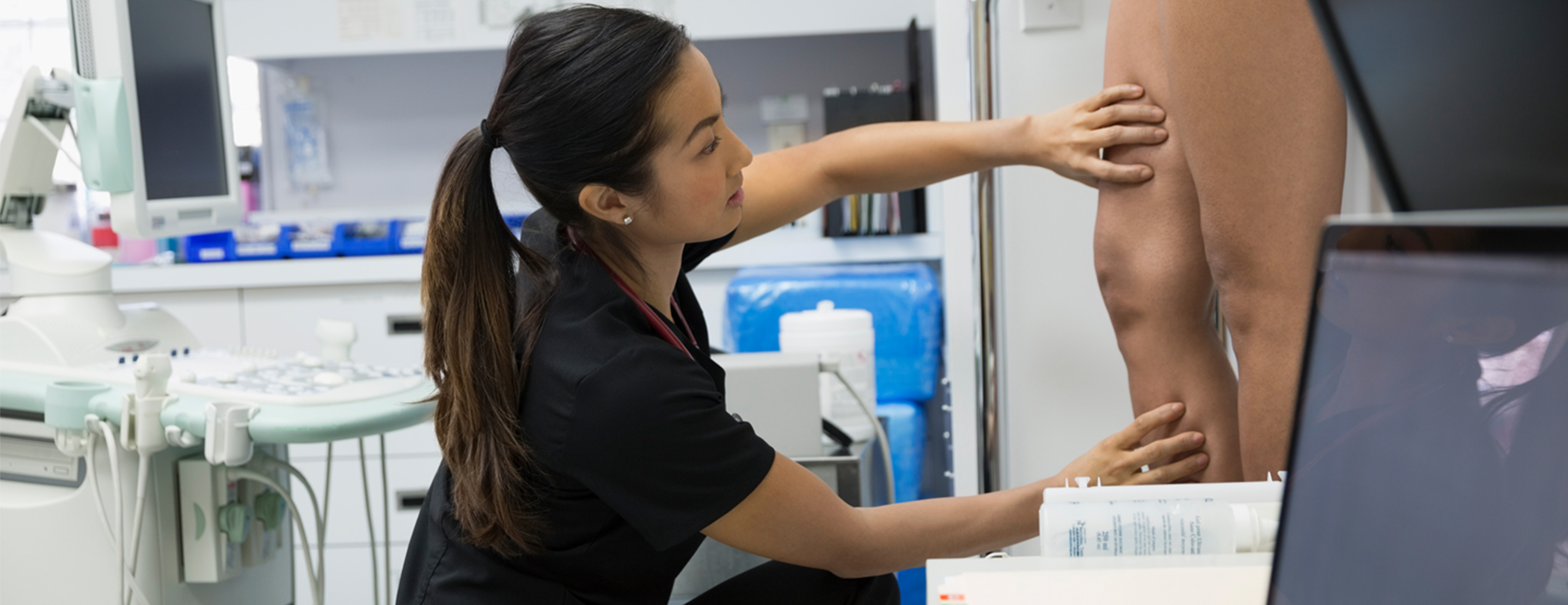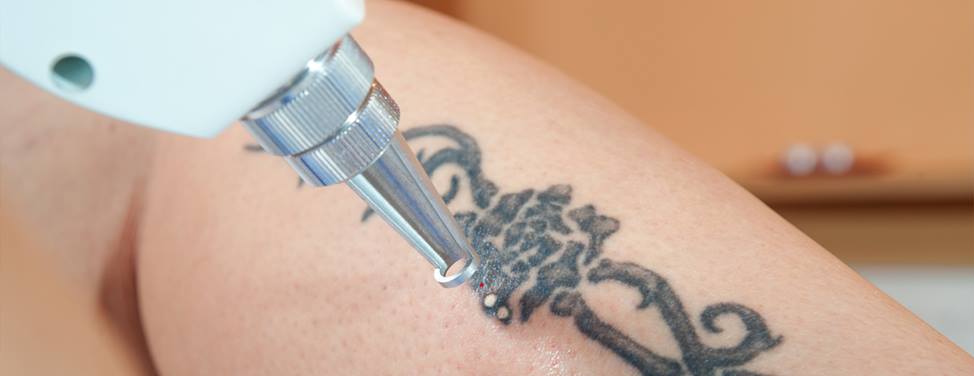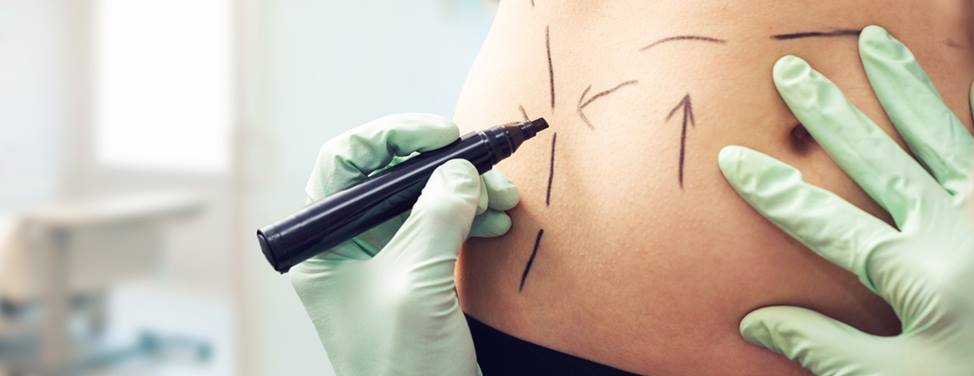Sclerotherapy is the most common treatment for improving the appearance of varicose and spider veins on the legs. It is also performed to treat symptoms caused by these conditions, such as aching, swelling and burning.

Sclerotherapy
Sclerotherapy involves injecting a chemical solution directly into the varicose or spider vein. The solution causes the vein walls to swell, stick together and seal shut, stopping the flow of blood. As a result, the vein fades within a few weeks.
Varicose veins are caused by weak or damaged valves in the veins. The heart pumps oxygen-rich blood to the body through the arteries. Veins then carry the blood from the body back to the heart. As your leg muscles squeeze, they push blood back to the heart from your lower body against the flow of gravity.
Veins have valves that act as one-way flaps to prevent blood from flowing backward as it moves up your legs. If the valves become weak, blood can leak back into the veins and collect there, causing veins to enlarge and become varicose.
Spider veins can develop from weak or damaged valves as well. They can also be caused by hormone changes, exposure to sun and injuries.
Preparation
If you are considering sclerotherapy, you will meet with a dermatologic surgeon for a consultation to discuss your cosmetic goals and to determine if sclerotherapy is the best approach to meet your needs. Your surgeon will examine the veins you would like treated, and will also examine you for evidence of more serious venous problems. Photographs may be taken for before and after results.
You will also discuss your medical history, including previous surgeries, present and past health problems, medications, and nutritional and herbal supplements you are taking or have taken at some time.
If you decide to have sclerotherapy, your doctor will give you specific instructions to follow before surgery. Your doctor will also review any medications you regularly take and tell you if you need to stop taking them before treatment.
Your doctor may recommend that you wear compression stockings after sclerotherapy to help with healing and decrease swelling. You will be told where you can buy them before your procedure.
Procedure
Sclerotherapy does not require anesthesia and is typically performed in your dermatologic surgeon's office. The procedure takes about 15 to 30 minutes, but the exact length of time depends on the size of the area and the number of veins being treated.
Depending on its size, a single vein may have to be injected more than once. Treatment must be performed weeks or months apart. Multiple veins may be injected during one treatment session.
During the procedure, you'll lie on your back with your legs slightly elevated. Your doctor will cleanse the area to be treated before inserting a solution into the targeted vein with a fine needle. The solution causes the vein walls to swell, stick together and seal shut, stopping the flow of blood. As a result, the vein fades within a few weeks.
You may experience some minor stinging or cramps when the needle is inserted into the vein. Be sure to tell your doctor if you have any discomfort.
After the injections, your doctor will apply compression and massage the treated area to keep blood out of the injected vein and disperse the solution. A compression pad may be taped onto the injection site to keep the area compressed.
Recovery
After the procedure, it is important to walk around to prevent the formation of blood clots in your legs. Most people return to their normal activities on the same day.
Your doctor will give you specific instructions to follow for recovery, including:
- Avoid sun exposure to the treated areas for two weeks after the procedure. The inflammation caused by the injections combined with sun exposure can lead to dark spots on your skin, especially if you already have a dark skin tone.
- Wear compression stockings to maintain compression on the treated veins.
Side Effects
Sclerotherapy is a simple and typically safe procedure. However, as with any procedure, it does carry some risk and may cause side effects.
Temporary side effects that may occur at the injection site include:
- Stinging or pain at the sites of injection
- Swelling of the ankles or feet, or muscle cramps
These side effects usually occur when hypertonic saline solution is used.
- Red, raised areas at the injection sites
These are similar to hives and should disappear within a day or so.
- Brown lines or spots on the skin at the injection sites
Darkened areas may result when blood escapes from treated veins. They are probably formed from iron in the blood. These dark areas occur more often in patients who have larger veins or patients who tan easily. In most cases, they disappear within a year, but sometimes they last longer.
- Groups of fine red blood vessels near the injection sites of larger vessels
About one-third of patients develop groups of vessels, especially on the thighs. Most disappear by themselves, some need additional injection treatments or laser therapy, and a few vessels may not disappear with treatment.
- Small, painful ulcers at treatment sites, which may develop immediately following treatment or after a few days
These occur when some of the solution escapes into the surrounding skin or enters a small artery at the treatment site. They can be successfully treated, but it is important to tell your dermatologist immediately if they develop.
- Temporary bruises
Bruises usually occur after laser treatments and are probably related to the thinness of blood vessel walls. They usually disappear in a few weeks. Occasionally, bruising occurs after sclerotherapy.
- Allergic reactions to sclerosing solutions
Although allergic reactions are uncommon, they can be treated. Inform your dermatologist immediately if you do experience an allergic reaction.
- Inflammation of treated blood vessels
This is very unusual but can be treated with medications such as aspirin, compression, antibiotics or heat.
- Lumps in injected vessels
Lumps are caused by coagulated blood. They are not dangerous and may be drained by your dermatologist a few weeks after injection.
- Burning with discoloration of the skin
UCSF Health medical specialists have reviewed this information. It is for educational purposes only and is not intended to replace the advice of your doctor or other health care provider. We encourage you to discuss any questions or concerns you may have with your provider.
















